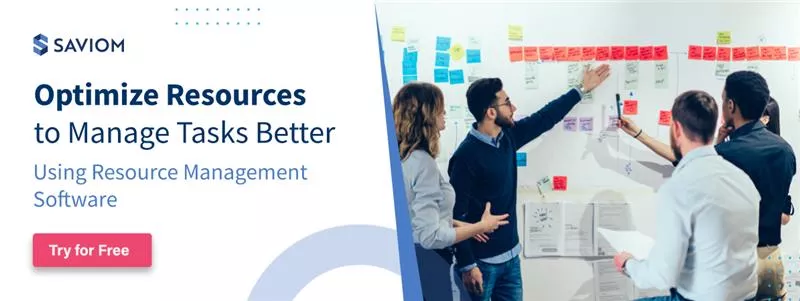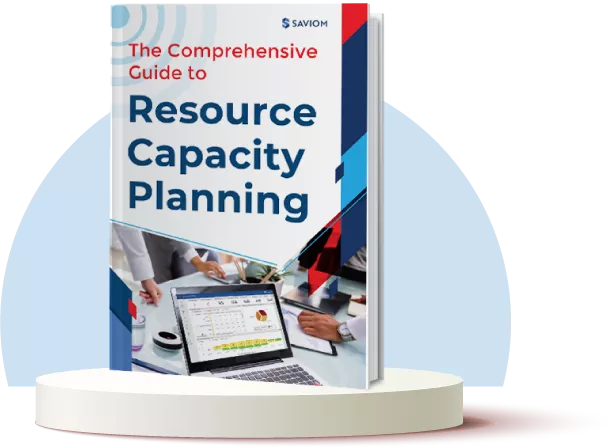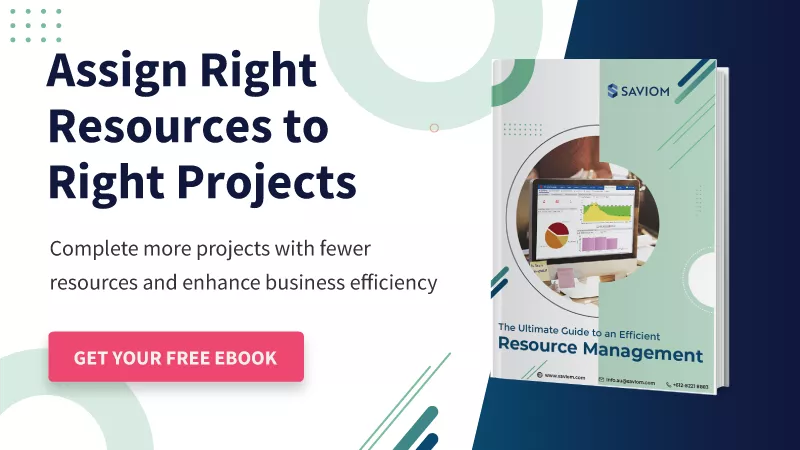The business environment is driven by employee-centric culture. And why not? The workforce and their talent steers you through the highly competitive world and enables your firm to outperform in the market. Thus, while taking on projects, the onus is on managers to ensure that they tap into the resource potential to the maximum extent without overutilizing them.
They can implement the right optimization technique to achieve this while ascertaining that the critical tasks of high-priority projects are accomplished first. This allows them to prioritize the tasks in the right order of importance and get work done without affecting the resources’ health index.
Optimizing resources is, therefore, a vital link between maintaining the workload and regulating the project tasks.
This article emphasizes how resource optimization can streamline the task management process.

Before we delve into the details, let us first get the basics right,
What is Resource Optimization?
Resource optimization techniques refer to methods used to effectively allocate and utilize resources such as personnel, equipment, finances, etc., to achieve project goals successfully. These include resource leveling and smoothing, scenario planning, critical path method, etc. By applying these techniques, organizations can optimize resource utilization and improve their top and bottom lines.
Given how it strikes the right balance between efficient resource and project management, resource optimization is widely accepted and used by project managers.
Here is a brief description of the two major processes used to optimize resource:
What are the resource optimization techniques used?
Managers can form a balanced project resource schedule in two ways. For one, they can adjust the project deadline according to the critical resource’s capacity and availability. For two, they can pull in more resources to get an extra set of hands or redistribute the booked resources’ schedule to accomplish the tasks without deviating from the timeline.
These two techniques are known as:
- Resource leveling
- Resource smoothing
- Resource Leveling
According to the Project Management Body of Knowledge (PMBOK) Guide, resource leveling is defined as ‘A technique in which start and finish dates are adjusted based on resource constraints to balance the demand for resources with the available supply.’
In this case, project deadlines are flexible, and hence managers have the liberty to move around the timeline to match the resources’ schedule. An ideal example is a research project, where the project timeline is adjustable.
Read More: Getting Resource Leveling Right for Projects
- Resource Smoothing
Resource smoothing is also known as time-constrained scheduling (TCS). As the name suggests, it is used when project deadlines are stringent and cannot be adjusted. Thus, while designing the schedules, project managers assess the resources’ workload. If they are prone to overutilization, managers redistribute their workload or pull in additional resources to balance it out.
Unlike resource leveling, resource smoothing has a restricted project deadline. A banking project is a prime example of resource smoothing as managers cannot move the end dates at any cost.
Now that the concept of resource optimization is understood let’s get a clear picture of task management and its importance,
What is task management and its importance
Every project is a conglomerate of several subdivided tasks where-in each holds a weightage on the overall project’s success.
Defining each task’s timeline and prioritizing them based on their importance and interdependency is known as task management.
Monitoring and tracking the progress of these tasks is also a vital component of the project planning process.
In a nutshell, task management is a subset of the project management process where every task’s lifecycle is diligently managed and evaluated. It plays a very crucial role in taking the project to the finish line.
The Work Breakdown Structure, which lays the foundation of a project, is the first stage of task management. After subdividing the project into several steps and further into small chunks of tasks, managers meticulously analyze every task and its impact on the overall project. Based on that, they organize them and state the required competencies and number of resources to execute them.
Post scheduling, the project begins, and the next step is to track the performance and progress. The WBS works as the planned value, and the actual time and cost spent on the tasks are compared against it. In case of any discrepancies, the decision-makers form an action plan to course correct and eliminate further hurdles.
All these steps form the cumulative process of task management. Thus, it is an incumbent project management technique without which it is likely to come to a grinding halt.
Read More: Project Resource Management: An Ultimate Guide on How to Master it
The main question is, how are resource optimization and task management interwoven?
Here is how,
How does resource optimization streamline task management?
As discussed earlier, giving precedence to critical tasks due to resource constraints is at the crux of resource optimization. Task management focuses on the same aspect, and resource optimization catalyzes this process before project initiation, which further helps in smooth execution and delivery.
Here are five ways how it boosts task management:
Facilitates prioritization of tasks
Let’s suppose you are working on an app development project, and you require a coder, designer, writer, and tester to accomplish the tasks. However, you realize the coder does not have the bandwidth to take up the task at the planning stage. Since coding is the first and most important step to begin app development, you can’t move forward.
What would you do?
If the timeline is not restricted, you adjust the dates around the resource’s availability and begin the project. In this case, the first step is to form the critical path method (CPM). It is a roadmap that depicts the most vital tasks of the project, and managers focus on accomplishing them first. This is an instance where resource leveling is used to avoid overwhelming the critical resource. While doing so, the CPM also orders the tasks chronologically based on their urgency. So it’s a win-win for both the processes where resource optimization facilitates task management.
Ensures timely delivery of projects
Considering the same example here, let’s assume you have a set deadline for the project, but your coder is working 10hrs a day for a week, i.e., 2 hours more than the standard working hours. This indicates that he/she is overallocated and is prone to burnout which can lower productivity. Now, one option is to analyze how many hours the task requires. If it needs 60 hours to finish and can be completed in 10 days, you can redistribute the workload and book him/her for 6 hours each day.
The second option is to hire two less-experienced or cost-effective global resources to lend a helping hand to the critical performer. These steps optimize the resource schedules and ensure that no resources experience fatigue. At the same time, it ensures the project is completed on time one way or the other. This allows managers to stick to the documented plan and finish tasks as projected.
Read More: The Art of Resource Planning Across Multiple Projects
Enables Seamless Resource scheduling
After all the tasks are detailed and their skill demand in the WBS, the next step is to find the competent resource, study their availability, and allocate them work. This is known as resource scheduling. However, managers optimize the workload before booking the employees for future tasks. It allows them to keep a check on the resources’ health index and productivity.
Thus, resource optimization rules out overworked employees’ possibilities and lowered productivity, eventually eliminating probable delays and budget overruns. All this collectively makes resource scheduling a breeze since all the corrective measures and permutation and combination occur before forming the final project resource schedules.
Increases transparency and eliminates discrepancies
Resource optimization promotes formulating a precise Critical Path Method, a definitive framework that portrays all the critical tasks in the right order. This document, along with the WBS, is accessible to all the stakeholders, managers, and the team. With the advent of technology, firms are equipping intuitive project management tools to allow automated updates in real-time. For example, if you mobilize a resource’s schedule on your scheduler, it will be reflected in everyone’s system instantaneously.
This encourages a transparent culture across the enterprise and keeps everyone in the loop. When each member is informed of the project’s progress, it minimizes the room for discrepancies and promotes smooth collaboration. Being a task and interdependency-intensive process, efficient task management banks on these factors. Moreover, when employees’ well-being is taken into account, it eases the process of project delivery.
Read More: 11 Ways to Improve Cross-Departmental Collaboration
Prevents employee burnout
A Deloitte survey revealed that 77% of the workforce has experienced burnout at their current workplace.
Thus, the motive to balance out workloads is to ensure employee’s mental and physical well-being. If your resources are not at their best, it will also project on your task performance and deteriorate the quality. Therefore, project managers are responsible for ensuring that every resource and their skill are utilized maximally while keeping their work distribution under control.
If one task is not at par with the quality standard, it will have a domino effect on the following ones. Thus, managers deploy resource optimization before loading the workforce. It allows seamless performance and elevates productivity which leads to a successful task management process.
Final thoughts
Optimization techniques and task management co-survive symbiotically in the project resource management realm. The ways mentioned above shed light on how resource optimization can rationalize the overall task management of a project. It allows employees to perform at the best of their capabilities and do justice to each given task.
In the employee-driven era, resources’ health holds the center stage. Thus managers must put an extra effort to ensure optimal utilization. If you couple both these processes, you will successfully ascertain a quality project delivery and sail through the volatile and competitive market.
Have you given a thought to implement resource optimization already?
The SAVIOM Solution
SAVIOM is the market leader in providing an Enterprise Resource Capacity Planning solution. With over 20 years of experience leading the market, Saviom is actively used by over 15 highly-esteemed global companies worldwide. The tools within the suite include project portfolio management, professional service automation, and workforce planning software. It also entails supporting solutions to schedule equipment and assets seamlessly. Re-engineer operational efficiency with a system shaped around your business!










